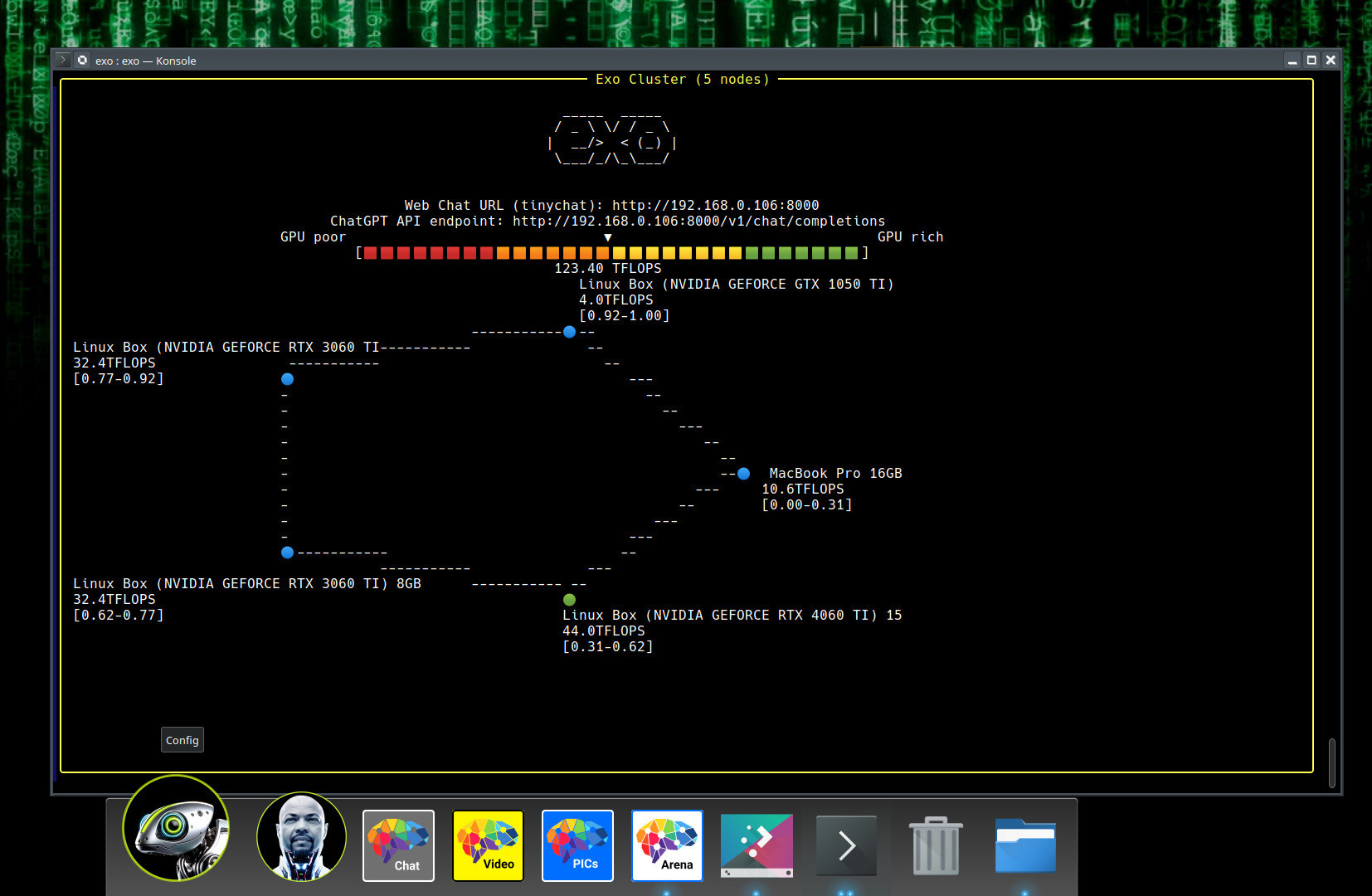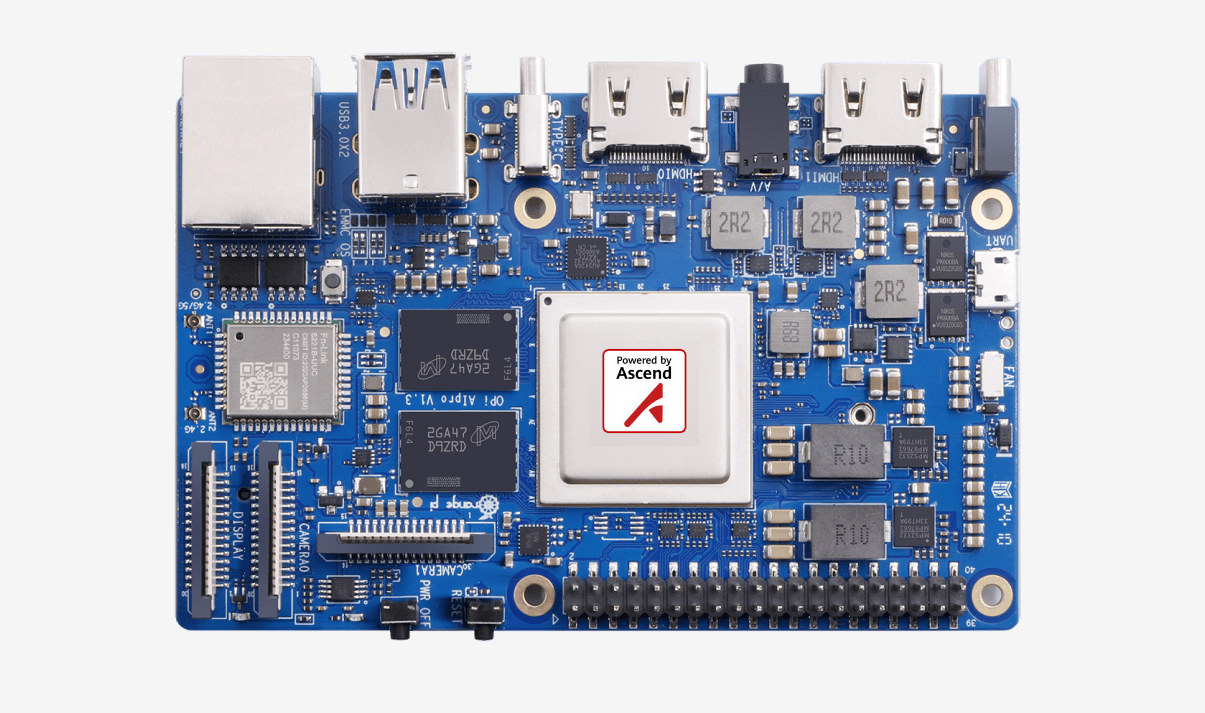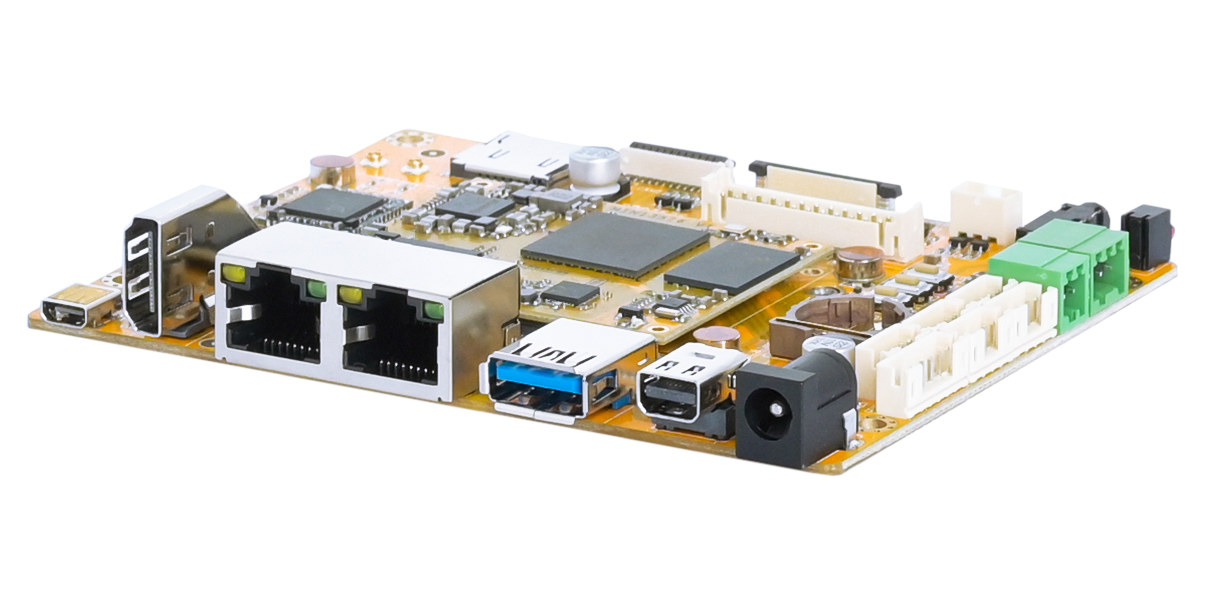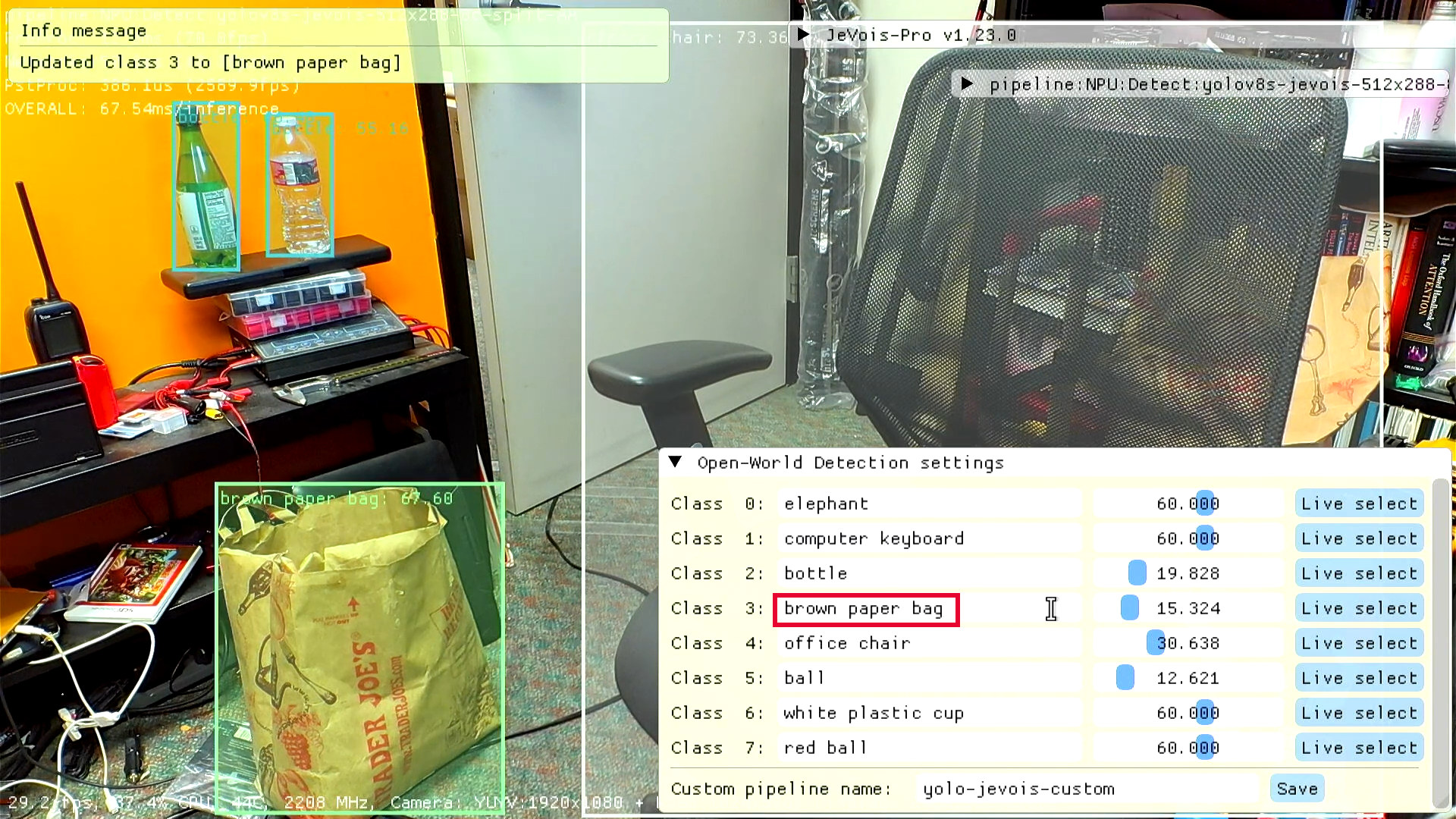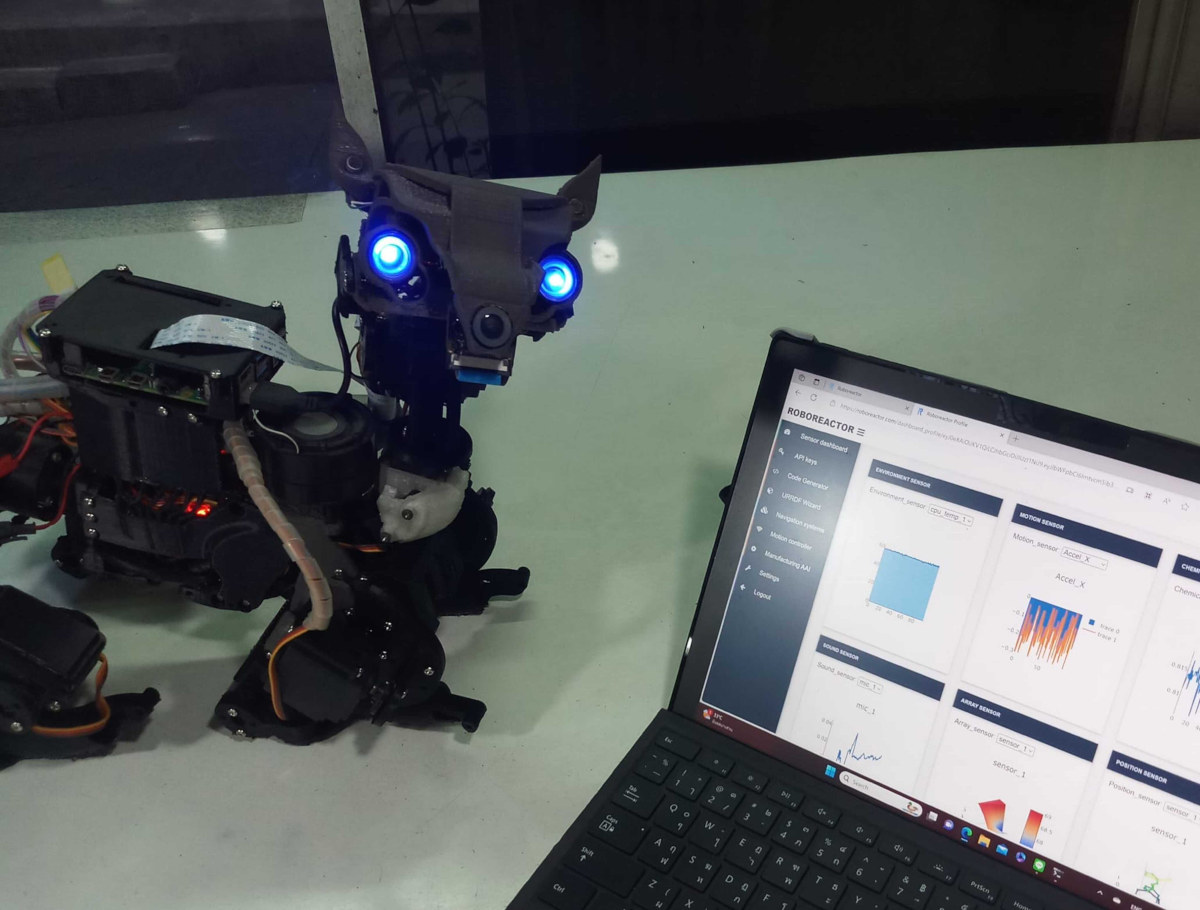Youtuber and tech enthusiast Binh Pham has recently built a portable plug-and-play AI and LLM device housed in a USB stick called the LLMStick and built around a Raspberry Pi Zero W. This device portrays the concept of a local plug-and-play LLM which you can use without the internet. After DeepSeek shook the world with its performance and open-source accessibility, we have seen tools like Exo that allow you to run large language models (LLMs) on a cluster of devices, like computers, smartphones, and single-board computers, effectively distributing the processing load. We have also seen Radxa release instructions to run DeepSeek R1 (Qwen2 1.5B) on a Rockchip RK3588-based SBC with 6 TOPS NPU. Pham thought of using the llama.cpp project as it’s specifically designed for devices with limited resources. However, running llama.cpp on the Raspberry Pi Zero W wasn’t straightforward and he had to face architecture incompatibility as the old […]
exo software – A distributed LLM solution running on a cluster of computers, smartphones, or SBCs
You’d typically need hardware with a large amount of memory and bandwidth and multiple GPUs, if you want to run the latest large language models (LLMs), such as DeepSeek R1 with 671 billion parameters. But such hardware is not affordable or even available to most people, and the Exo software works around that as a distributed LLM solution working on a cluster of computers with or without NVIDIA GPUs, smartphones, and/or single board computers like Raspberry Pi boards. In some ways, exo works like distcc when compiling C programs over a build farm, but targets AI workloads such as LLMs instead. Key features of Exo software: Support for LLaMA (MLX and tinygrad), Mistral, LlaVA, Qwen, and Deepseek. Dynamic Model Partitioning – The solution splits up models based on the current network topology and device resources available in order to run larger models than you would be able to on any […]
Orange Pi AIPro (8T) SBC features a 8 TOPS Huawei Ascend AI SoC, runs Ubuntu or openEuler
Orange Pi AIPro (8T) is a new single board computer for AI applications that features an unnamed Huawei Ascend AI quad-core 64-bit processor delivering up to 8 TOPS (INT8) of AI inference performance, although there’s also a 20 TOPS (INT8) variant of the SoC. The SBC comes with up to 16GB LPDDR4X and a 32MB SPI flash but also supports other storage options such as a microSD card, an eMMC flash module, and/or an M.2 NVMe or SATA SSD. The board also features two HDMI 2.0 ports, one MIPI DSI connector, a 3.5mm audio jack, two MIPI CSI camera interfaces, Gigabit Ethernet and WiFi 5 connectivity, a few USB ports, and a 40-pin GPIO header for expansion. Orange Pi AIPro specifications: SoC – Huawei Ascend quad-core 64-bit processor delivering up to 8 TOPS (INT8) AI performance and equipped with an unnamed 3D GPU; Likely Ascend 310B with Arm Cortex-A76 equivalent […]
Boardcon SBC3576 – A feature-rich Rockchip RK3576 SBC with HDMI, mini DP, dual GbE, WiFi 6, optional 5G/4G LTE module, and more
Boardcon SBC3576 is a feature-rich single board computer (SBC) based on the MINI3576 system-on-module powered by a Rockchip RK3576 AI SoC and equipped with two 100-pin and one 44-pin board-to-board connectors for interfacing with the carrier board. The carrier board is equipped with up to 8GB RAM, 128GB eMMC flash, two gigabit Ethernet ports, a WiFi 6 and Bluetooth 5.3 module, 4K-capable HDMI 2.1 and mini DP video outputs, a mini HDMI input port, a USB 3.0 Type-A port, RS485 and CAN Bus terminal block, and more. The Rockchip RK3576 SoC comes with the same 6 TOPS NPU found in the Rockchip RK3588/RK3588S SoC and can be used as a lower-cost alternative with less performance. Boardcon SBC3576 specifications: SoC – Rockchip RK3576 CPU 4x Cortex-A72 cores at 2.2GHz, four Cortex-A53 cores at 1.8GHz Arm Cortex-M0 MCU at 400MHz GPU – ARM Mali-G52 MC3 GPU clocked at 1GHz with support for OpenGL […]
Edge video processing platform features NXP i.MX 8M Plus, i.MX 93, or i.MX 95 SoC, supports up to 23 camera types
DAB Embedded AquaEdge is a compact computer based on NXP i.MX 8M Plus, i.MX 93, or i.MX 95 SoC working as an edge video processing platform and supporting 23 types of vision cameras with resolution from VGA up to 12MP, and global/rolling shutter. The small edge computer features a gigabit Ethernet RJ45 jack with PoE to power the device. It is also equipped with a single GSML2 connector to connect a camera whose input can be processed by the built-in AI accelerator found in the selected NXP i.MX processors. Other external ports include a microSD card slot, a USB 3.0 Type-A port, and a mini HDMI port (for the NXP i.MX 8M Plus model only). DAB Embedded AquaEdge specifications: SoC / Memory / Storage options NXP i.MX 8M Plus CPU – Quad-core Cortex-A53 processor @ 1.8GH, Arm Cortex-M7 real-time core AI accelerator – 2.3 TOPS NPU VPU Encoder up to […]
YOLO-Jevois leverages YOLO-World to enable open-vocabulary object detection at runtime, no dataset or training needed
YOLO is one of the most popular edge AI computer vision models that detects multiple objects and works out of the box for the objects for which it has been trained on. But adding another object would typically involve a lot of work as you’d need to collect a dataset, manually annotate the objects you want to detect, train the network, and then possibly quantize it for edge deployment on an AI accelerator. This is basically true for all computer vision models, and we’ve already seen Edge Impulse facilitate the annotation process using GPT-4o and NVIDIA TAO to train TinyML models for microcontrollers. However, researchers at jevois.org have managed to do something even more impressive with YOLO-Jevois “open-vocabulary object detection”, based on Tencent AI Lab’s YOLO-World, to add new objects in YOLO at runtime by simply typing words or selecting part of the image. It also updates class definitions on […]
Roboreactor – A Web-based platform to design Raspberry Pi or Jetson-based robots from electronics to code and 3D files
Roboreactor is a web-based platform enabling engineers to build robotic and automation systems based on Raspberry Pi, NVIDIA Jetson, or other SBCs from a web browser including parts selection, code generation through visual programming, and generating URDF models from Onshape software. You can also create your robot with LLM if you wish. The first step is to create a project with your robot specifications and download and install the Genflow Mini image to your Raspberry Pi or NVIDIA Jetson SBC. Alternatively, you can install Gemini Mini middleware with a script on other SBCs, but we’re told the process takes up to 10 hours… At this point, you should be able to access data from sensors and other peripherals connected to your board, and you can also start working on the Python code using visual programming through the Roboreactor node generator without having to write code or understand low-level algorithms. Another […]
Silicon Labs unveils low-cost BG22L BLE 5.4 and BG24L BLE 6.0 SoCs
Silicon Labs has unveiled the BG22L and BG24L SoCs for low-cost, ultra-low-power Bluetooth LE connectivity. These are Lite versions of the company’s BG22 and BG24 SoC families introduced in 2020 and 2022 respectively. The 38.4 MHz Silabs BG22L Arm Cortex-M33 SoC targets high-volume, cost-sensitive Bluetooth 5.4 applications like asset tracking tags and small appliances. In comparison, the 78 MHz BG24L Cortex-M33 SoC offers an affordable entry-level solution with AI/ML acceleration and Bluetooth 6.0 Channel Sounding to locate items or implement access control in crowded areas such as warehouses and multi-family housing. Since the specs for the BG22L and BG24L are similar to the ones for the BG22 and BG24 chips I won’t reproduce those here, and instead highlights the main features and cost-saving measures. Silicon Labs BG22L Bluetooth LE 5.4 SoC Silicon Labs BG22L highlights: MCU – Arm Cortex-M33 @ 38.4 MHz with DSP and FPU (BG22 is clocked at […]



